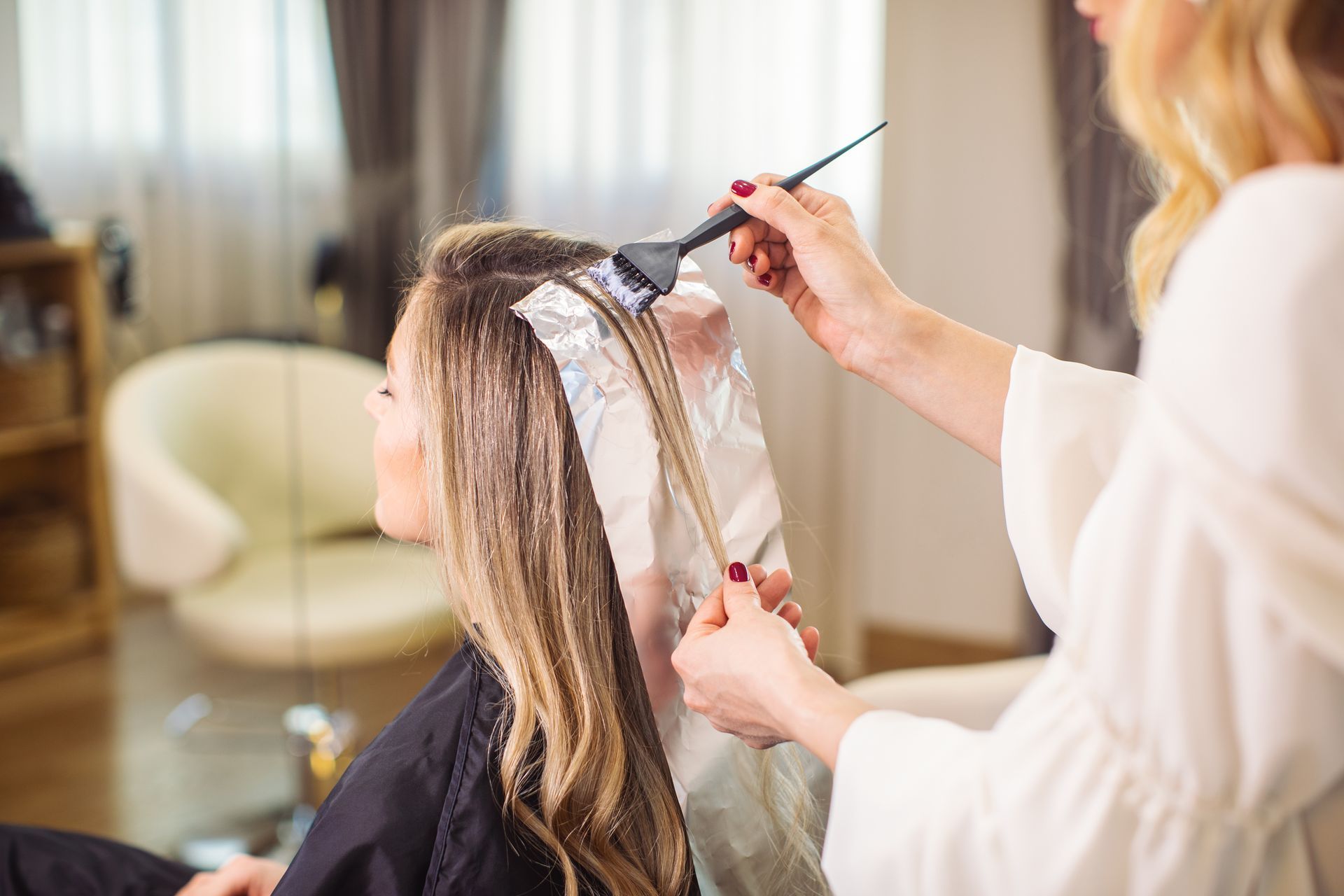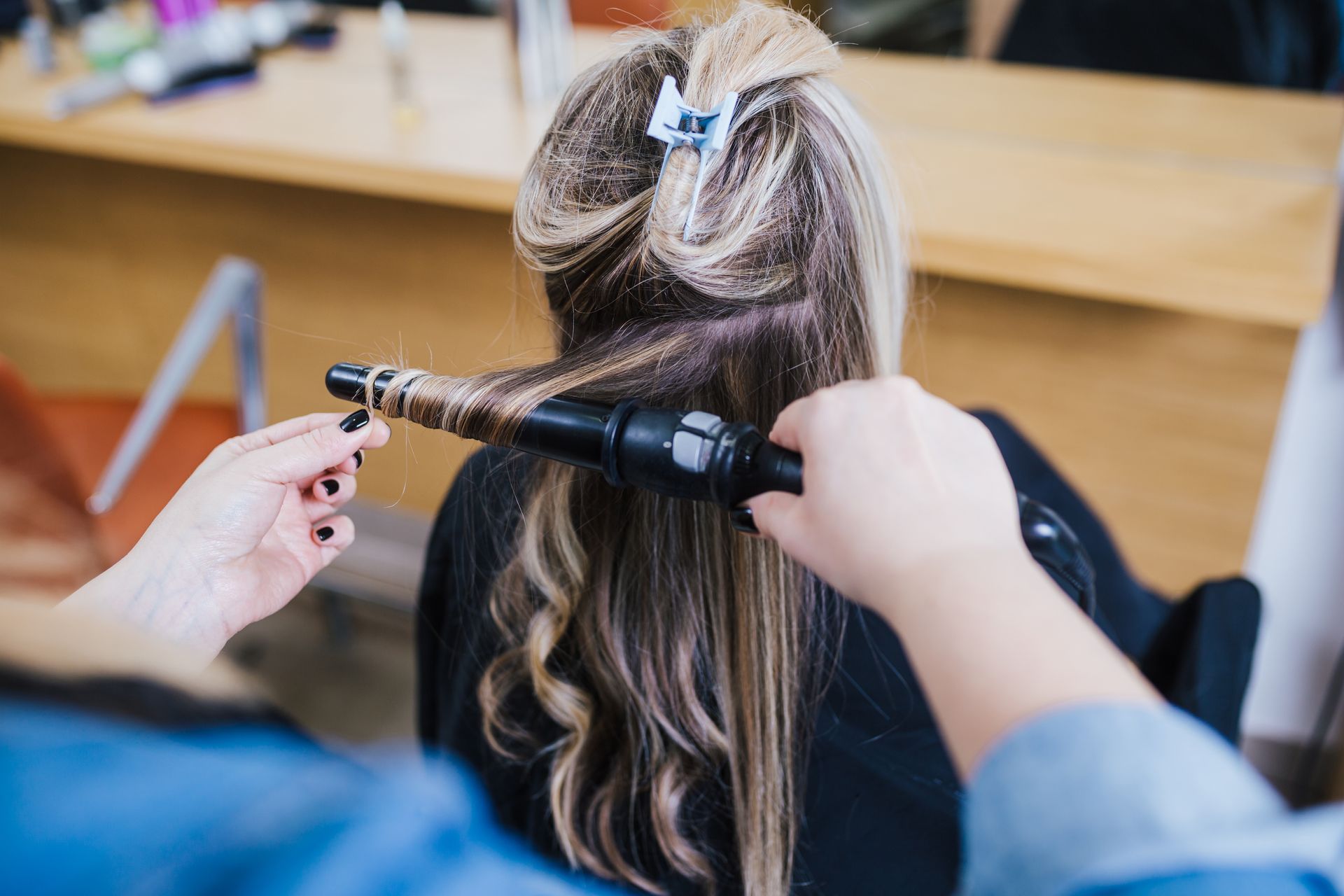Experts at Yell Predict Blue-Black To Be The Hair Colour of Choice This Christmas Season After Reaching 6 Billion Views on TikTok

Experts at Yell have predicted Blue-Black to be the 2023 hair colour of the festive season, based on current trends. The term “Blue-black hair” currently has 6,600 Google searches each month across the UK and over 6 billion views on TikTok - higher than any other hair colour. Given this trend, Blue-black can be revealed as the new must-have hair colour for Christmas and New Year 2023.
The festive season is one of the most popular times of year to play around with and change hairstyles and colours, gearing up for Christmas and New Year's parties and events. With this in mind, Yell has revealed the most popular hair colour and style trends for Christmas 2023, along with advice on how to choose the perfect festive hair colour and style.
Most Popular Festive Hair Colours
As the festive season approaches, more and more of us are looking for that perfect style/hair change-up in anticipation of Christmas and New Year parties and events. Whether it is donning your favourite hairstyle or changing your colour to suit the festive season trends, there is no better time to try a new look.
According to data from Yell, the most popular hair colour for the Christmas season is blue-black. With over 6,600 searches per month in the UK and over 6 billion views on TikTok, it is no surprise that the sleek and sophisticated colour is making a comeback after the trend built momentum on social media with influences from Demi Lovato and Katy Perry throughout 2023.
Although not a traditional Christmas colour, Pink Hair was revealed to be the second most popular colour for the festive season, with 6,100 monthly searches and 5.3 billion views on TikTok. Coming in close third was ‘Cold Brew hair’ with 5,600 monthly Google searches and 3 billion TikTok views.
| Hair Colour | Monthly Search Demand | TikTok Views |
|---|---|---|
| Blue-Black Hair | 6,600 | 6 Billion |
| Pink Hair | 6,100 | 5.3 Billion |
| Cold Brew Hair | 5,600 | 3 Billion |
| Blonde Hair | 5,500 | 1.6 Billion |
| Cherry Red Hair | 5,300 | 144.1 Million |
| Ash Brown Hair | 4,800 | 144 Million |
| Ginger Hair | 4,800 | 106.5 Million |
| Burgundy Hair | 3,500 | 54.8 Million |
| Caramel Highlights | 3,500 | 41.6 Million |
| Red Money Pieces | 1,400 | 40 Million |

Most Popular Festive Hair Styles
There is no better time than the festive season to experiment with new and exciting hairstyles. From the timeless slick back bun to glamorous Hollywood waves, Christmas and New Year is known for having multitudes of hair trends from year to year.
Data from Yell has revealed that Hollywood Waves will be the most popular hair trend for the festive season with 2,900 monthly searches and 226.3 million views on TikTok. Coming in as the second most popular hairstyle for Christmas is slicked back bun. The classic style has over 1,700 monthly Google searches and over 88 million views. Yell revealed the third most popular hairstyle for the festive period is the bouncy blowout, which has over 53 million TikTok views and 260 Google searches a month.
| Hairstyle | Monthly Search Demand | TikTok Views |
|---|---|---|
| Hollywood Waves | 2,900 | 226.3 Million |
| Slicked Back Bun | 1,700 | 188 Million |
| Sleek Straight Hair | 1,110 | 153 Million |
| Bouncy Blowout | 280 | 153 Million |
| Bardot Bouffants | 280 | 53.2 Million |
| Slicked Curly Pony | 270 | 42 Million |
| Bubble Pony Tail | 270 | 12 Million |
| Curly Up Do | 260 | 10.4 Million |
| Finger Waves | 200 | 8 Million |
| Curly Faux Hawk | 110 | 7 Million |
The team at Yell spoke to several hairdressers regarding festive hair trends.
When asked what the most requested hairstyle and colour over the Christmas period is, hairdresser Kirsty Georgeson from Space Salon said: “Bouncy curls and blowouts are the most requested style over the festive season as it is a fun, romantic style that is simple to recreate, no matter the occasion.”
A festive hairstyle is nothing without the right colour, and when we spoke to Gwenda Harmon at Power Your Curls, she stated: “Warm copper colours, honeyed reds and golden beiges are a top choice over the winter season for those with cooler skin tones who are looking to add a bit of warmth to their look. Silver and white hair variations, along with blue-ish hues are popular over the festive season for those with warmer skin tones, giving a nice snowy effect for the winter period.”
Whilst the festive season is a great time to try a new style or hair colour, our hair expert Kirsty Georgeson said: “It is important to be mindful of your future hair goals, as big and regular changes season to season can bring a risk of damage to your hair, be it from a colour change, or regular styling at high heats.”
Three Expert Tips on How To Choose The Perfect Festive Hair Colour & Style
Look at your face shape: Understanding your face shape will ultimately help you decide what kind of hairstyle you should have and will suit you best. Some of the most common face shapes include oval, rounded and triangular. For example, oblong shapes suit a soft wavy updo, so a loose, boho-inspired bun is the perfect choice. Contrastingly, more triangular-shaped faces suit any slicked-back do. The popular slicked-back bun is ideal for giving that “snatched” look. By looking at your individual face shape, you can be sure to choose the perfect look for you.
Check your skin tone: When it comes to choosing the perfect shade and colour for your festive hair makeover, looking at your skin tone is important when trying to find the right shade and colour for you. Icy and platinum shades are the best for those with fair skin with warm undertones, whilst those with deeper skin and a cooler undertone are best choosing cooler browns and deep blacks.
Look at your hair texture: Hair texture, whether it is naturally curly, straight or somewhere in between, choosing the right hairstyle can be easier when choosing based on your hair texture. A curly updo is perfect for curly hair, whether you choose a loose, “messy” bun or a crown braid, the texture of the curly hair will help add structure and volume to any romantic-inspired updo. Contrastingly, straight hair can be hard to style when wanting to add volume to your hair, so choosing a sleek style such as a slicked-back ponytail or bun, or sleek straight hair is the ideal festive hairstyle choice and is easy to accomplish.
About Yell
Yell Ltd exists to connect businesses and consumers via its leading marketplace for local services and offering managed digital marketing helping businesses to find, connect and sell to consumers online. Yell Ltd is a proud Google Premier Partner, Microsoft Advertising Elite Channel Partner, and Meta Business Partner.
Learn more at https://business.yell.com and our Media Centre
Visit our social media channels: Facebook, Twitter, LinkedIn, Instagram
Download the free Yell consumer app from the App Store or Google Play
Download the free Yell for Business app from the App Store or Google Play
For media enquiries, please email: press.enquiries@yell.com







